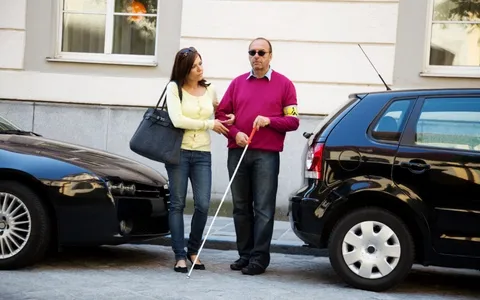Visually Impaired and Visually Disabled: A Comprehensive Guide

Understanding Visual Impairment and Disability
Visual impairment, often referred to as low vision, is a condition where eyesight is partially lost and cannot be fully restored through medical interventions such as glasses, surgery, or medication. It manifests in various ways, such as blurry vision, blind spots, or difficulty seeing in low-light conditions.
The term “visually disabled,” however, focuses on the impact that vision loss has on daily living. It emphasizes how impaired vision limits an individual’s ability to perform essential activities like reading, navigating spaces, or participating in work or social interactions. While the terms are often used interchangeably, visual impairment describes the condition itself, whereas visual disability highlights its practical consequences.
Globally, millions of people experience visual impairment, and it is not limited to any specific age group. While it is more prevalent in older adults due to age-related conditions, children can also be affected by congenital or developmental eye disorders.
Causes and Patterns of Visual Impairment
Visual impairment arises from various causes, some of which are preventable or treatable with timely care. Cataracts, for example, are one of the most common causes of vision loss, particularly in older adults. They occur when the lens of the eye becomes clouded, impairing clarity of vision. Another significant cause is glaucoma, a condition that damages the optic nerve, often as a result of increased pressure within the eye. Left untreated, glaucoma can lead to peripheral vision loss.
Other causes include macular degeneration, which affects central vision and is often associated with aging, and diabetic retinopathy, a complication of diabetes that damages blood vessels in the retina. Even refractive errors such as nearsightedness and farsightedness, when uncorrected, can lead to significant visual impairment.
Vision loss does not present uniformly; its patterns vary widely. Some individuals experience blurred vision, where objects appear unclear or distorted, while others may have blind spots that limit their field of view. Central vision loss, often linked to macular degeneration, makes it difficult to see objects directly in front, while peripheral vision loss, a symptom of glaucoma, reduces awareness of objects to the sides.
Impact on Daily Life
Living with visual impairment significantly affects an individual’s ability to perform everyday tasks. Reading and writing often become challenging, particularly for those who rely on fine details or small print. Navigating both familiar and unfamiliar environments can be difficult, leading to an increased risk of falls and accidents. Social interactions are also impacted, as recognizing faces or participating in group activities becomes harder, often resulting in feelings of isolation.
Emotional well-being is another critical aspect of life that visual impairment influences. Many individuals experience frustration, anxiety, or depression as they adjust to their limitations. However, with appropriate support, training, and tools, many people with visual impairments can adapt and regain their confidence.
The Role of Assistive Technologies
Technological advancements have transformed how individuals with visual impairments navigate their world. Screen readers, for instance, convert on-screen text into spoken words or braille, enabling visually impaired users to interact with computers and smartphones. Magnification devices enlarge text and images for those with low vision, while refreshable braille displays make digital content accessible for braille readers.
Supporting Visually Impaired Individuals
For those living with visual impairment, support from family and caregivers is invaluable. Simple modifications at home, such as improving lighting, organizing frequently used items, and removing tripping hazards, can make the environment more navigable and safe. Emotional support is equally important, as adjusting to vision loss can be a challenging process. Patience, encouragement, and understanding can go a long way in helping individuals build confidence and maintain a positive outlook.
Vision Impairment in Children
While visual impairment is often associated with older adults, children can also experience vision loss. Early detection is key to addressing vision problems in children, as many conditions can be successfully treated if caught in time. Parents and caregivers should watch for signs such as difficulty focusing on objects, frequent squinting or blinking, or holding items very close to their face.
Steps Toward Better Vision Care
Preventing or managing vision loss starts with proactive eye care. Regular eye exams are essential for catching potential issues early, particularly for individuals with risk factors such as diabetes or a family history of eye conditions. Awareness campaigns can further educate the public about preventable causes of vision loss, encouraging people to seek timely medical attention.









